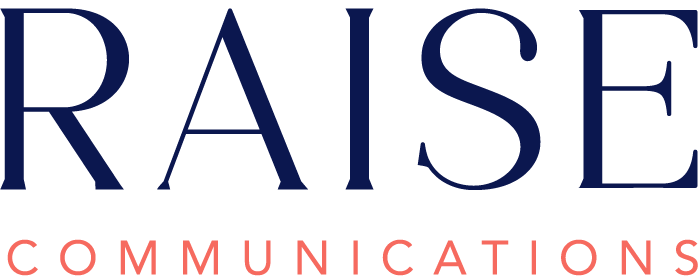When Is The Right Time for PR? And Answers To Other Common PR Questions
Cari Sommer, CEO, RAISE Communications
Thinking about your communications and PR strategy in 2023? Especially during these dynamic times, companies need to tell their story to differentiate, build momentum, and yes, sometimes communicate a repositioning or change of strategy. While communications and PR is an investment, it can also be one of the most cost-effective, high impact marketing channels. From generating leads, to supercharging a conversion funnel to helping to attract top talent, successful PR always starts with the right strategy.
When does PR make sense for your business?
Here are a few of the top-of-mind questions we recently reviewed with top marketing leaders at a Founder Collective CMO roundtable.
When should we start spending on PR?
At RAISE, we see companies have the most success with PR, not at a particular stage, but when certain fundamentals are in place. These include clarity over specific business goals and outcomes you are trying to achieve (there can be several), insight into the audience you are trying to reach, and referenceable traction or proof points.
If it doesn’t already exist, your PR team should help guide you in defining a crisp point of view on the market or industry you are in (if it can be backed up by data, even better).
Once you’ve done a good audit of the fundamentals, it’s also instructive to look at the macro perspective. For example, a crowded media landscape suggests you should get started sooner rather than later.
And last but not least, will the CEO/Founder devote some time to PR in addition to the marketing leader? At RAISE, we have observed, the best PR strategy happens when you have a founder/CEO + marketing leader + an engaged outside partner working together.
How do you select the best PR firm?
Once you know the time is right, the next question is how to find the right team to make sure you are implementing your goals.
Here are some do’s and don’ts to guide your analysis.
Do:
Find someone who understands your space– or can get up to speed fast.
Confirm who is on the team. How senior they are, and who is your direct contact?
Evaluate the approach. Will the team hustle for you? Are they strategic and proactive?
Look for an advisor for the long haul. Is this someone you would trust if the NYTimes is about to break a big story about your company?
Look to see if other clients are “super fans.”
Don’t
Make the proposal process unduly burdensome– the best firms will opt out of traditional RFPs.
Assume that the best firms aren’t equally vetting you. They also want a good fit —from subject matter to client relationships.
Treat your PR partner as another vendor — rather they should be considered a strategic partner. Someone on your PR team should become your go-to leader for all things communications. Just as you want your internal executives motivated and connected to your company, the same is true for your PR agency.
How do we measure PR and get more ROI out of the budget?
Though it may feel elusive, PR can be measured, which gets back to why it is so important to establish goals. While attribution may not be as direct as some other channels, PR can in fact be measured across a number of different metrics, including brand awareness, quality metrics and business outcomes. Here is how:
What are some ways to supercharge these results? To start with, don’t wait for news to happen. Instead, create news moments by sharing your point of view on market discussions or by mining your business for notable trends that impact larger discussions. Also, think expansively about channels where your story might resonate (there are tons of media outlets from trade to podcasts to local and national). Work with your PR team to create an intentional strategy that leverages thought leadership and bylines. And finally, build enough runway into your budget to have the time to build and nurture top tier media relationships.
Last but not least, should you announce funding?
Fundraising is a big milestone for a growing company, as it signals traction in the market. As much as companies are eager to send that signal, it is always wise to weigh the pros and cons of announcing growth vs. staying in stealth mode.
Announcing funding without a larger PR strategy may be a missed opportunity with short lived benefits. Funding, however, is a great way to kick off a larger media strategy, especially when you can couple it with detailed news about product traction and momentum (including client quotes is even better).
It’s also the right moment to further develop company messaging and showcase vision. Without these pieces in place, your company may be foregoing an opportunity to insert your larger story into the media conversation while people are paying attention.
Storytelling is more important than ever (especially as companies navigate uncertain times). Having the right strategy– and partner– in place is critical.
To learn more tips about how to maximize your PR strategy, check out the RAISE blog here.

